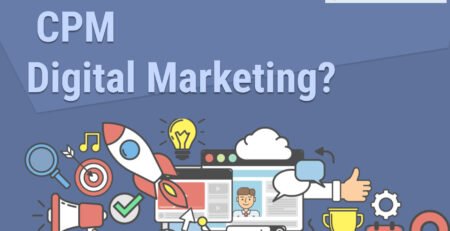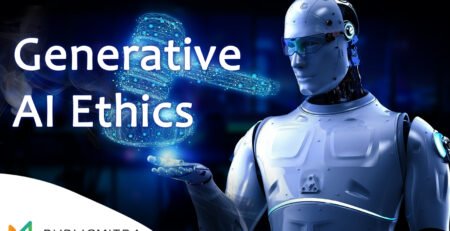Agentic AI vs Generative AI: How Advanced AI Technologies Are Revolutionizing Digital Marketing in 2025
Introduction: The Dawn of Autonomous AI in Marketing
The digital marketing landscape is experiencing its most significant transformation since the advent of social media. As we advance through 2025, artificial intelligence has evolved beyond simple content generation to become truly autonomous, decision-making entities that can independently execute complex marketing strategies. This evolution marks the transition from reactive Generative AI to proactive Agentic AI systems that are reshaping how businesses connect with their audiences.
Unlike traditional AI that reacts to human prompts, Agentic AI is proactive. It doesn’t just wait to be told what to do, it acts independently, makes decisions, and continuously improves over time. This fundamental shift represents more than just a technological upgrade – it’s a complete paradigm change in how marketing operations are conceived, executed, and optimized.
The emergence of revolutionary platforms like Perplexity’s Comet browser, ChatGPT’s agent capabilities, and various agentic AI applications is not just enhancing existing marketing practices but creating entirely new possibilities for customer engagement, campaign optimization, and business growth.
Understanding the Core Differences: Agentic AI vs Generative AI
What is Generative AI?
Generative AI has been the cornerstone of AI-powered marketing for the past few years. This technology excels at creating content, images, videos, and text based on specific prompts and instructions provided by human users. Popular tools like ChatGPT, DALL-E, and Midjourney exemplify generative AI’s capabilities in producing human-like responses and creative outputs.
Key characteristics of Generative AI include:
- Prompt-dependent operation: Requires human input to generate outputs
- Content creation focus: Primarily designed for producing text, images, and multimedia content
- Single-task orientation: Typically handles one request at a time
- Human-supervised workflow: Needs human oversight for quality control and direction
- Static learning approach: Learns from training data but doesn’t adapt in real-time
What is Agentic AI?
Agentic AI represents the next evolutionary step in artificial intelligence, characterized by autonomous decision-making capabilities and goal-oriented behavior. Agentic AI systems differ from generative AI because they act independently from human intervention. These systems can plan, execute, and adjust strategies based on real-time data and feedback without constant human guidance.
Core features of Agentic AI include:
- Autonomous operation: Can work independently without continuous human input
- Goal-oriented behavior: Focuses on achieving specific objectives rather than just completing tasks
- Multi-step reasoning: Can break down complex problems into manageable components
- Real-time adaptation: Continuously adapt and improve performance based on real-time feedback and outcomes
- Dynamic learning: Learns and adjusts strategies based on ongoing interactions and results
The Practical Marketing Implications
The distinction between these AI types becomes crucial when considering marketing applications. GenAI might draft marketing content, while agentic AI launches and iterates the campaign automatically based on real-time performance data. This difference represents a shift from AI as a creative tool to AI as a strategic partner capable of managing entire marketing ecosystems.
Revolutionary Platforms Shaping Marketing’s Future
Perplexity’s Comet Browser: Redefining Web Interaction
Perplexity launched Comet, an AI-powered web browser that represents a fundamental reimagining of how users interact with the internet. “Comet transforms entire browsing sessions into single, seamless interactions, collapsing complex workflows into fluid conversations,” according to the company’s launch announcement.
Marketing Impact of Comet Browser:
Enhanced Customer Journey Mapping: Comet’s ability to understand and remember context across browsing sessions allows marketers to create more cohesive, personalized experiences. The browser can track customer interests and behaviors across multiple touchpoints, providing unprecedented insights into the customer journey.
Autonomous Task Completion: Perplexity’s Comet browser enters early testing with true agentic capabilities, autonomous tab management, and social media posting. This capability means marketing campaigns can be executed and optimized without constant human supervision, leading to more efficient resource allocation and faster response times.
Conversational Commerce Integration: The browser’s natural language interface enables seamless transitions from research to purchase, reducing friction in the customer acquisition process. Marketers can design campaigns that leverage these conversational pathways to guide customers through complex purchasing decisions.
Market Position and Growth: Srinivas recently said that Perplexity saw 780 million queries in May 2025, and that the company’s search products are seeing more than 20% growth month-over-month. This rapid growth indicates significant market acceptance and presents new opportunities for marketers to reach engaged, AI-savvy audiences.
ChatGPT Agents: The Evolution of Conversational Marketing
The introduction of ChatGPT agents marks a significant advancement in how businesses can deploy AI for customer service, lead generation, and sales support. These agents go beyond simple chatbots by maintaining context, understanding complex queries, and taking autonomous actions to resolve customer needs.
Strategic Marketing Applications:
Personalized Customer Support: ChatGPT agents can handle complex customer inquiries, provide product recommendations, and even process orders without human intervention. This capability allows marketing teams to focus on strategic initiatives while ensuring consistent, high-quality customer experiences.
Dynamic Content Creation: Unlike traditional generative AI, ChatGPT agents can create content that adapts based on user interactions and feedback. This means marketing materials can be continuously optimized based on audience response and engagement metrics.
Lead Qualification and Nurturing: These agents can engage with potential customers, qualify leads based on predefined criteria, and nurture prospects through personalized communication sequences that adapt based on user behavior and preferences.
Google Gemini and Competitive Landscape
The AI marketing ecosystem extends beyond individual platforms to encompass major tech players like Google with Gemini, Microsoft with Copilot, and various specialized AI marketing tools. Each platform brings unique capabilities and integration possibilities that marketers must consider when developing comprehensive AI strategies.
How Agentic AI is Transforming Digital Marketing Operations
Campaign Management Revolution
Traditional digital marketing campaigns require constant human oversight for optimization, budget allocation, and performance monitoring. Agentic AI can improve those practices by acting autonomously and adjusting strategies based on real-time economic, social and political events. This autonomous capability transforms campaign management from a reactive process to a proactive, self-optimizing system.
Real-time Optimization: Agentic AI systems can monitor campaign performance across multiple channels simultaneously, making instant adjustments to bidding strategies, audience targeting, and creative elements based on performance data. This real-time optimization capability can significantly improve ROI while reducing the need for manual intervention.
Cross-channel Orchestration: These systems can coordinate campaigns across various platforms, ensuring consistent messaging while adapting content and strategies to each platform’s unique characteristics and audience behaviors.
Predictive Budget Allocation: By analyzing historical performance data and market trends, agentic AI can predict which campaigns and channels are likely to perform best, automatically reallocating budgets to maximize overall campaign effectiveness.
Content Strategy and Creation Evolution
Generative AI agents can save marketers an average of three hours per content piece, allowing them to focus on strategy and innovation. However, agentic AI goes beyond time savings to fundamentally change how content strategies are developed and executed.
Dynamic Content Ecosystems: Agentic AI can create interconnected content ecosystems where individual pieces are designed to work together across multiple touchpoints, automatically adjusting based on audience response and engagement patterns.
Audience-adaptive Messaging: These systems can analyze audience segments in real-time and adjust messaging tone, style, and content focus to maximize engagement with specific demographic groups or behavioral segments.
Performance-driven Content Evolution: Unlike static content creation, agentic AI can continuously refine and improve content based on performance metrics, user feedback, and engagement data, ensuring that marketing messages remain effective and relevant.
Customer Experience Transformation
The integration of agentic AI into customer experience management represents one of the most significant opportunities for marketing transformation. These systems can provide personalized, contextual interactions that adapt based on individual customer needs and preferences.
Hyper-personalization at Scale: Agentic AI can analyze vast amounts of customer data to create individualized experiences for each user, considering factors like browsing history, purchase behavior, demographic information, and real-time context.
Predictive Customer Support: By analyzing customer behavior patterns and historical data, these systems can identify potential issues before they occur, proactively reaching out to customers with solutions or support.
Omnichannel Consistency: Agentic AI can ensure consistent customer experiences across all touchpoints, maintaining context and personalization whether customers interact via website, mobile app, social media, or other channels.
Industry-Specific Applications and Use Cases
E-commerce and Retail Marketing
The retail sector has been among the early adopters of agentic AI technologies, leveraging these systems to enhance everything from product recommendations to inventory management and customer service.
Dynamic Pricing Strategies: Agentic AI can monitor competitor pricing, demand fluctuations, and inventory levels to automatically adjust pricing strategies in real-time, maximizing both competitiveness and profitability.
Inventory-aware Marketing: These systems can coordinate marketing campaigns with inventory levels, automatically promoting products with high stock levels while reducing promotion of low-inventory items to prevent stockouts and customer disappointment.
Personalized Shopping Assistants: AI agents can guide customers through the purchasing process, providing personalized recommendations, answering questions, and even completing purchases on behalf of customers based on their preferences and past behavior.
Financial Services Marketing
An example is a fintech firm that uses agentic AI to monitor market fluctuations and automatically adjust portfolio allocations. The financial services sector presents unique opportunities for agentic AI applications, particularly in areas requiring real-time decision-making and risk assessment.
Risk-based Marketing: AI agents can assess customer risk profiles and financial situations to provide personalized financial product recommendations and marketing messages that align with individual circumstances and goals.
Regulatory Compliance Automation: These systems can ensure that marketing communications comply with complex financial regulations across different jurisdictions, automatically adjusting messaging and disclosures based on regulatory requirements.
Market-responsive Campaigns: Agentic AI can monitor financial markets and economic indicators to adjust marketing strategies and messaging in response to market conditions, ensuring that campaigns remain relevant and effective.
B2B Marketing Transformation
Business-to-business marketing presents unique challenges that agentic AI is particularly well-suited to address, including long sales cycles, complex decision-making processes, and the need for highly personalized outreach.
Lead Scoring and Prioritization: AI agents can analyze prospect behavior across multiple touchpoints to provide dynamic lead scoring that helps sales teams prioritize their efforts and focus on the most promising opportunities.
Account-based Marketing Automation: These systems can coordinate complex, multi-touchpoint campaigns targeting specific accounts, personalizing messaging and timing based on the unique characteristics and needs of each target organization.
Sales Enablement Integration: Agentic AI can provide sales teams with real-time insights about prospects, including optimal communication timing, preferred content types, and likely objections, enabling more effective sales conversations.
Strategic Implementation Framework
Assessment and Planning Phase
Successfully implementing agentic AI in marketing requires a structured approach that begins with a comprehensive assessment of current capabilities, goals, and infrastructure.
Current State Analysis: Organizations must evaluate their existing marketing technology stack, data infrastructure, and team capabilities to identify areas where agentic AI can provide the most significant impact and value.
Goal Definition and Metrics: Clear objectives and success metrics must be established before implementation, including specific KPIs that will measure the effectiveness of agentic AI initiatives.
Resource Allocation: Implementing agentic AI requires investments in technology, training, and potentially new personnel. Organizations must carefully plan resource allocation to ensure successful adoption and ongoing success.
Technology Integration Strategies
The technical aspects of implementing agentic AI require careful consideration of integration points, data flows, and system compatibility.
API and Data Integration: Agentic AI systems require access to comprehensive data sources to function effectively. Organizations must ensure that their data infrastructure can support the real-time data needs of these systems.
Platform Compatibility: Consideration must be given to how agentic AI tools will integrate with existing marketing platforms, CRM systems, and analytics tools to ensure seamless operation and data consistency.
Security and Privacy Compliance: Given the autonomous nature of agentic AI, robust security measures and privacy compliance protocols must be established to protect customer data and ensure regulatory compliance.
Change Management and Training
The transition to agentic AI represents a significant shift in how marketing teams operate, requiring comprehensive change management and training initiatives.
Team Skill Development: Marketing professionals must develop new skills to work effectively with agentic AI systems, including understanding how to set parameters, interpret results, and provide strategic guidance to autonomous systems.
Process Redesign: Existing marketing processes may need to be redesigned to accommodate the autonomous capabilities of agentic AI while maintaining appropriate human oversight and quality control.
Cultural Adaptation: Organizations must foster a culture that embraces AI collaboration while maintaining focus on strategic thinking, creativity, and customer-centricity that remain uniquely human capabilities.
Measuring Success and ROI in AI-Driven Marketing
Key Performance Indicators
Measuring the success of agentic AI implementations requires both traditional marketing metrics and new KPIs specific to AI-driven processes.
Efficiency Metrics: Time savings, reduced manual intervention requirements, and improved resource utilization are key indicators of agentic AI effectiveness.
Performance Improvements: Campaign performance metrics such as click-through rates, conversion rates, and customer acquisition costs should show improvement as AI systems optimize based on real-time data and feedback.
Innovation Indicators: The ability to execute more sophisticated campaigns, reach new audience segments, and implement previously impossible strategies indicates successful AI adoption.
Return on Investment Calculation
Calculating ROI for agentic AI investments requires consideration of both direct cost savings and indirect benefits such as improved customer satisfaction and competitive advantages.
Direct Cost Savings: Reduced labor costs, improved efficiency, and automated optimization can provide measurable cost savings that contribute directly to ROI calculations.
Revenue Impact: Improved campaign performance, better customer experiences, and new revenue opportunities generated through AI capabilities should be factored into ROI assessments.
Strategic Value: Long-term competitive advantages, improved market position, and enhanced customer relationships provide strategic value that may not be immediately quantifiable but contributes to overall business success.
Future Outlook and Predictions
Emerging Technologies and Trends
The rapid evolution of AI technologies suggests that the current capabilities of agentic AI represent only the beginning of what’s possible in marketing automation and optimization.
Advanced Personalization: Future developments will likely enable even more sophisticated personalization capabilities, potentially creating unique experiences for individual customers across all touchpoints.
Cross-platform Intelligence: Enhanced integration between different AI platforms and tools will create more comprehensive and intelligent marketing ecosystems.
Predictive Market Analysis: Improved predictive capabilities will enable marketers to anticipate market trends, customer needs, and competitive moves with greater accuracy and longer time horizons.
Industry Transformation Timeline
Agentic AI is poised to disrupt virtually every industry, and getting on board with digital transformation is crucial for any company’s success. The timeline for this transformation varies by industry and organization size, but several key phases are likely to emerge.
Early Adoption Phase (2025-2026): Forward-thinking organizations will implement basic agentic AI capabilities, focusing on specific use cases and building foundational capabilities.
Mainstream Integration (2026-2027): As platforms mature and success stories emerge, mainstream adoption will accelerate, with most organizations implementing at least basic agentic AI capabilities.
Advanced Optimization (2027-2029): Sophisticated implementations will emerge, with organizations using complex agentic AI systems to manage entire marketing ecosystems autonomously.
Preparing for the AI-Driven Future
Organizations that want to succeed in the AI-driven marketing landscape must begin preparing now, even if full implementation is still months or years away.
Skill Development Initiatives: Investing in team training and development will be crucial for organizations to effectively leverage agentic AI capabilities as they become available.
Infrastructure Preparation: Building robust data infrastructure and ensuring platform compatibility will position organizations for successful AI adoption.
Strategic Planning: Developing clear strategies and roadmaps for AI integration will help organizations make informed decisions about when and how to implement agentic AI capabilities.
Challenges and Considerations
Technical Challenges
Implementing agentic AI in marketing environments presents several technical challenges that organizations must address to ensure successful adoption.
Data Quality and Integration: Agentic AI systems require high-quality, integrated data to function effectively. Organizations must invest in data management and integration capabilities to support these systems.
System Reliability: Autonomous systems must be highly reliable to avoid negative impacts on customer experience and business operations. Robust monitoring and failsafe mechanisms are essential.
Scalability Requirements: As agentic AI systems take on more responsibilities, they must be able to scale to handle increased workloads and complexity without degrading performance.
Ethical and Regulatory Considerations
The autonomous nature of agentic AI raises important ethical and regulatory questions that organizations must address proactively.
Transparency and Explainability: Customers and regulators may require transparency about how AI systems make decisions that affect them. Organizations must ensure their systems can provide appropriate explanations for their actions.
Privacy and Data Protection: Agentic AI systems typically require access to substantial amounts of customer data. Organizations must ensure robust privacy protections and compliance with data protection regulations.
Bias and Fairness: AI systems can perpetuate or amplify biases present in training data or algorithms. Organizations must implement measures to detect and mitigate potential bias in their AI systems.
Organizational Readiness
Successfully implementing agentic AI requires organizational readiness across multiple dimensions beyond just technical capabilities.
Leadership Commitment: Senior leadership must understand and commit to the changes required for successful AI adoption, including investments in technology, training, and process redesign.
Cultural Adaptation: Organizations must foster a culture that embraces AI collaboration while maintaining focus on uniquely human capabilities such as creativity, empathy, and strategic thinking.
Risk Management: Implementing autonomous systems requires robust risk management frameworks to address potential failures, security breaches, and unintended consequences.
Conclusion: Embracing the Autonomous Marketing Revolution
The transition from generative AI to agentic AI represents more than just a technological upgrade – it’s a fundamental reimagining of how marketing operates in the digital age. Unlike traditional AI systems that generate a single output based on a given prompt, AI Agents work together, sharing goals and making collective decisions to tackle tasks more effectively.
Organizations that successfully navigate this transformation will gain significant competitive advantages through improved efficiency, enhanced customer experiences, and the ability to execute sophisticated marketing strategies at scale. However, success requires more than just adopting new technologies – it demands thoughtful planning, strategic implementation, and ongoing adaptation as these systems continue to evolve.
The emergence of platforms like Perplexity’s Comet browser, advanced ChatGPT agents, and sophisticated agentic AI systems signals that the future of marketing is arriving faster than many anticipated. Organizations that begin preparing now – by building foundational capabilities, developing necessary skills, and creating strategic roadmaps – will be best positioned to capitalize on these revolutionary technologies.
As we move through 2025 and beyond, the question is not whether agentic AI will transform marketing, but how quickly organizations can adapt to harness its full potential. The marketing leaders who embrace this autonomous revolution while maintaining focus on customer value and strategic thinking will define the future of digital marketing for years to come.
The convergence of advanced AI capabilities with evolving customer expectations and market dynamics creates unprecedented opportunities for those ready to embrace the change. The autonomous marketing revolution is here – the question is whether your organization is prepared to lead or follow in this new era of AI-driven customer engagement and business growth.











